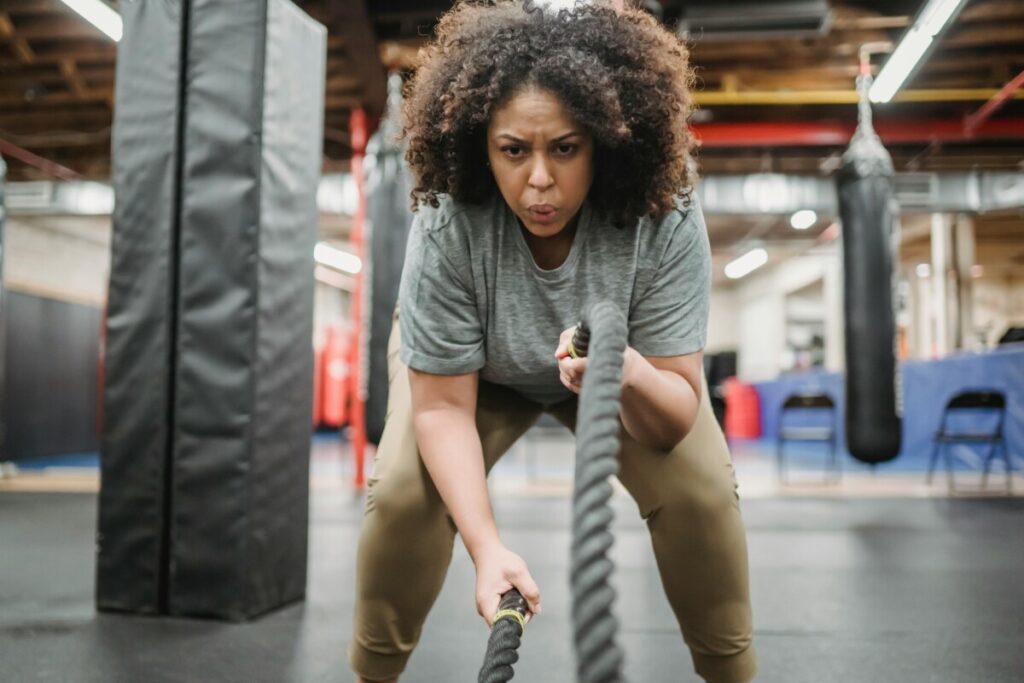“Meditation and Fitness”

Meditation has long been used to increase focus and decrease stress. Its benefits have been widely acknowledged in the fitness industry. Incorporating meditation into your fitness routine can improve your overall wellness and performance. It can also help you connect with your body and mind in new ways. This article will cover the benefits of meditation in fitness, types of meditation for fitness, applications of meditation in fitness, and meditation apps for fitness. Then, we will conclude with some tips for adding meditation to your fitness routine.
Benefits of Meditation in Fitness
Meditation has many benefits when applied to fitness. Practicing meditation can reduce stress and help you stay focused while working out. It can also help you to become more mentally clear and improve concentration. Additionally, meditation in fitness can help to improve physical wellness and performance. Finally, meditation encourages a mind-body connection. This can increase your overall well-being through relaxation.
Types of Meditation for Fitness
Meditation is a practice that can be used in any situation, including fitness. Several types of meditation can be used to enhance focus and performance. These include mindful breathing, centering techniques, flow state, movement, and yoga and meditation. Mindful breathing is a simple technique that focuses on the in-breath and out-breath. It allows the practitioner to develop a sense of inner stillness and presence.
Centering techniques involve focusing on a single object or concept. This brings the mind into a calm and peaceful state. In a flow state, people are deeply engaged in an activity. This allows the mind to absorb the experience. Mindful movement techniques involve bringing total awareness to one’s body and movements. Yoga and meditation are complementary practices. They combine physical postures with breathing and meditation techniques. This achieves a state of deep relaxation and mental clarity.
Applications of Meditation in Fitness
Meditation can help with fitness in many ways, such as improving athletic performance. It can also assist with strength and endurance training, as well as recovery. Meditation can help athletes reduce stress. This can help them focus and enhance their performance. Meditation can help ease the mind and body into strength and endurance training. This allows people to push themselves further in their workouts. Finally, meditation can help with recovery. It improves circulation and allows the muscles to relax more quickly and completely.
Meditation and mindful movement can also be used in fitness. They can help increase body awareness, which can improve proper form and technique. This can be particularly helpful when working with weights or learning new exercises. Lastly, mindfulness can also help increase motivation. It can create a more positive attitude towards fitness and exercise.
Meditation Apps for Fitness
Using a meditation app for developing your fitness routine can be a great way to increase focus and motivation. Apps like Calm, Headspace, and Aura offer diverse guided meditation practices for athletes and fitness enthusiasts. They make it easy to incorporate the practice into your routine. These apps offer guided meditations, music, and stories. They can help you develop mindfulness and relaxation techniques. This can help you stay focused during your workouts.
Using a meditation app in your fitness routine can help you gain increased awareness and clarity during exercise. It can also boost your performance and improve your overall mental and physical wellness. Here are tips for using a meditation app in fitness. Set aside a few minutes each day for meditation. Explore different types of available guided meditation. Use meditation during recovery after a workout.
Conclusion
Meditation has long been known to reduce stress and improve focus in many aspects of life. Incorporating it into your fitness routine has numerous benefits. It can help reduce stress, improve focus and concentration, and increase physical wellness. It also creates a mind-body connection that helps with relaxation. Several types of meditation can be used in fitness. These include mindful breathing, centering techniques, flow state, mindful movement, yoga, and meditation. Additionally, many apps can be used to aid in fitness meditation. For example, for relaxation and breathing exercises.
Incorporate meditation into your exercise routine. Doing so can improve focus and concentration, physical wellness, and relaxation. To get started, choose one type of meditation to practice and find a meditation app that you enjoy. With consistent practice, you will begin to notice the benefits of meditation in your fitness journey.
https://serenity7wellness.com/index.php/2023/09/25/mastering-balance-and-coordination-building-stability-and-control/
https://www.ncbi.nlm.nih.gov/
FAQ’s
Q: What are the benefits of combining meditation with exercise?
A: Combining meditation and exercise can enhance focus, improve workout performance, and promote overall well-being. It helps to bring mindfulness to your physical activity and can make exercise more effective.
Q: How can I meditate during my workout routine?
A: You can practice mindful exercise by paying attention to your breath, movements, and body sensations while working out. You can also incorporate guided meditation or focus on the present moment to enrich your workout experience.
Q: Can meditation help achieve fitness goals?
A: Yes, regular meditation practice can support your fitness goals by fostering a balanced and focused mindset, improving mental resilience, and enhancing the mind-body connection, thereby contributing to overall physical health.
Q: What is the impact of meditation on post-workout recovery?
A: Engaging in meditation and mindfulness practices post-workout can aid in relaxation, reduce muscle tension, and promote quicker recovery by calming the mind and supporting the body’s natural healing processes.
Q: How can meditation improve my workout performance?
A: Meditation can enhance focus, increase mental clarity, and help manage stress and anxiety, leading to improved workout performance. It allows you to stay present and attentive, thus optimizing your overall exercise experience.







